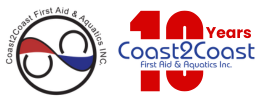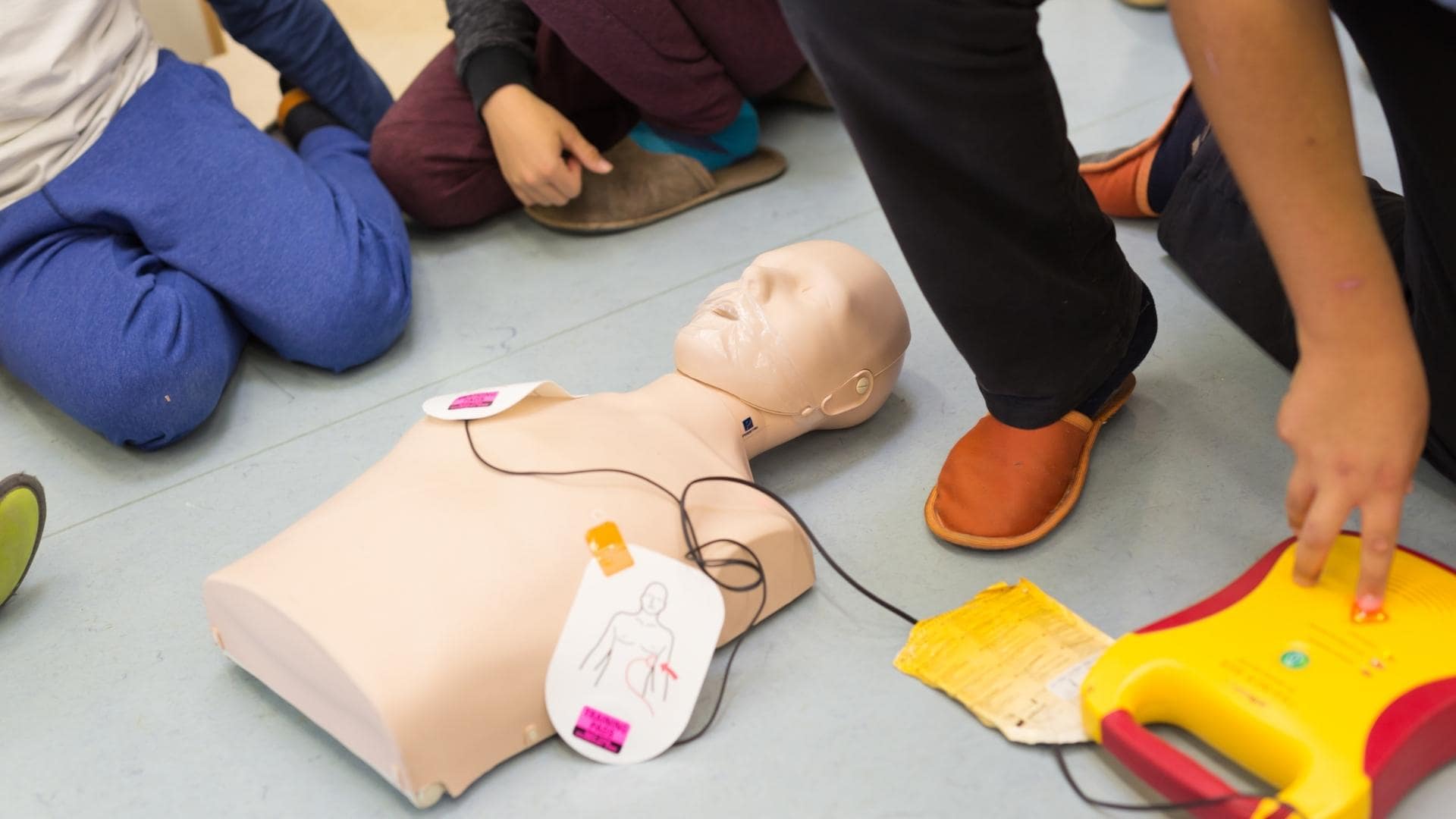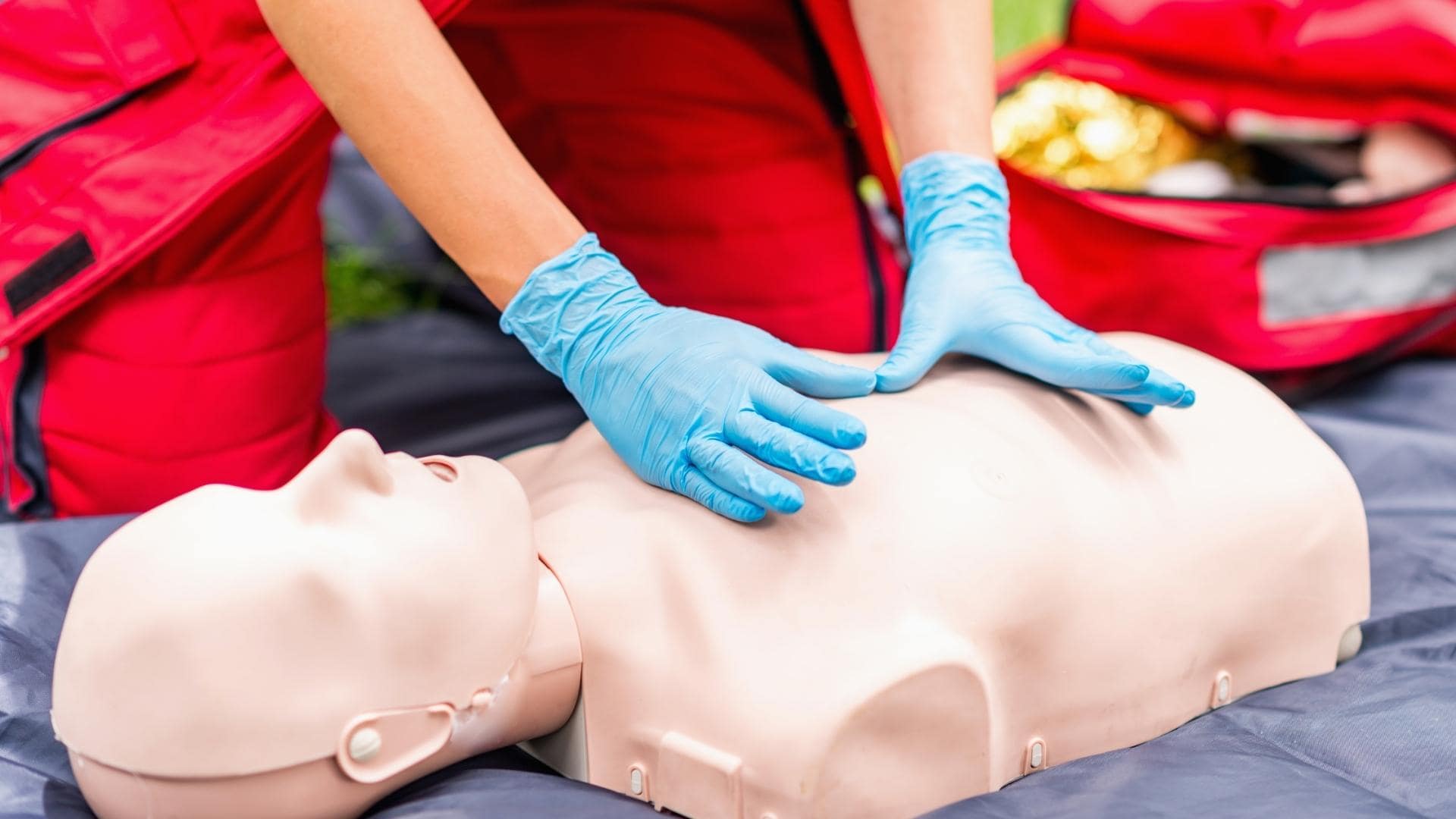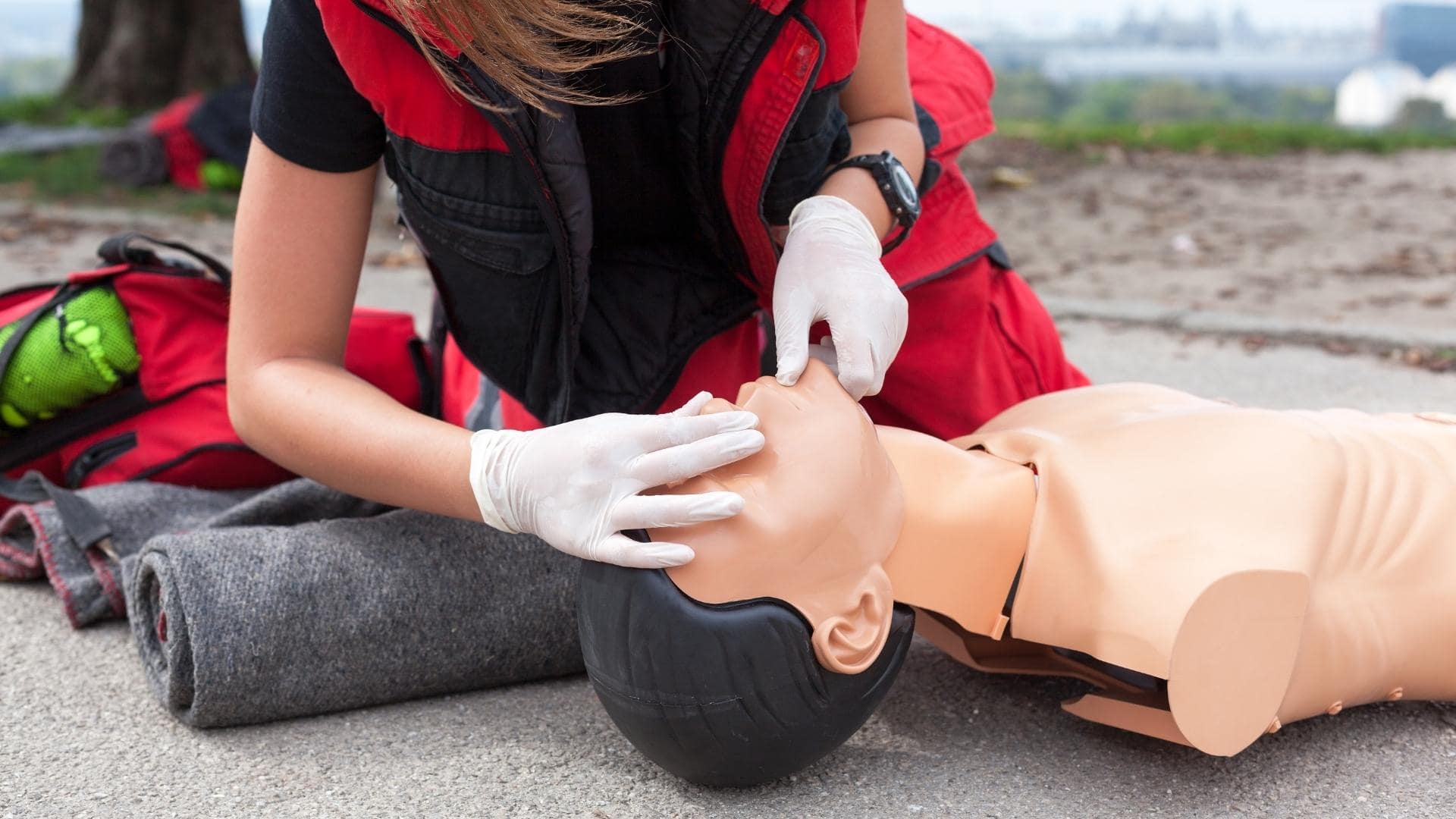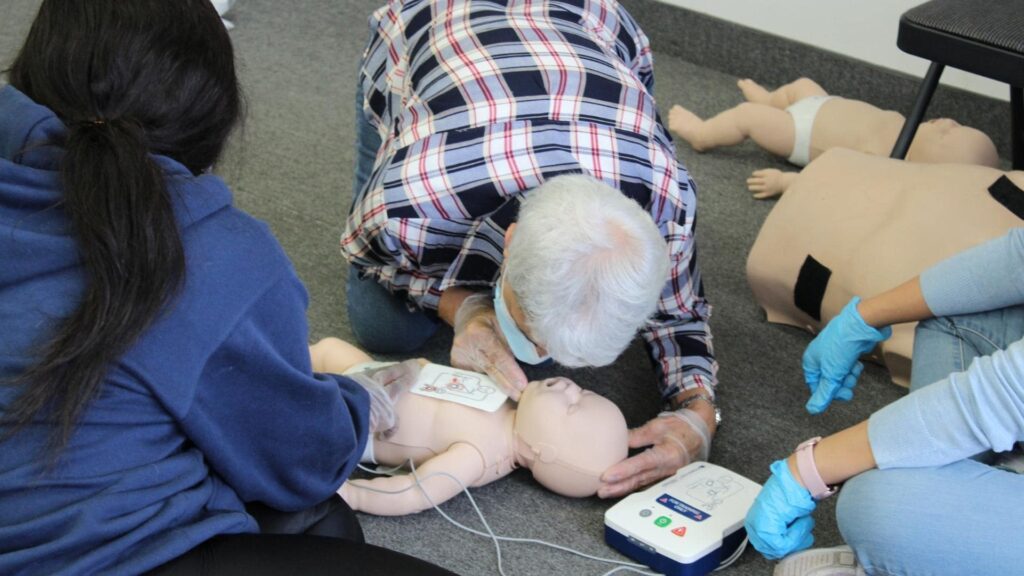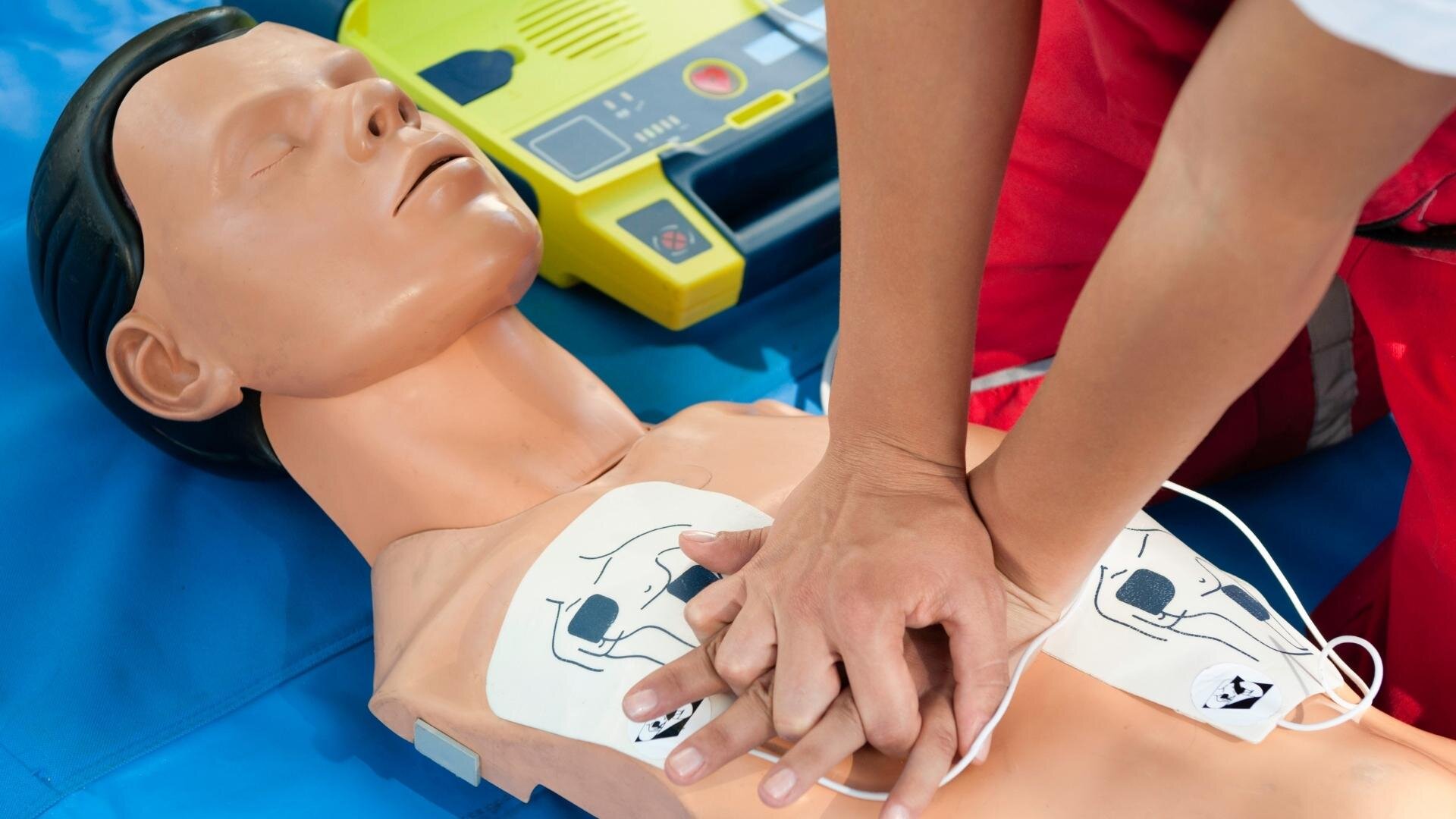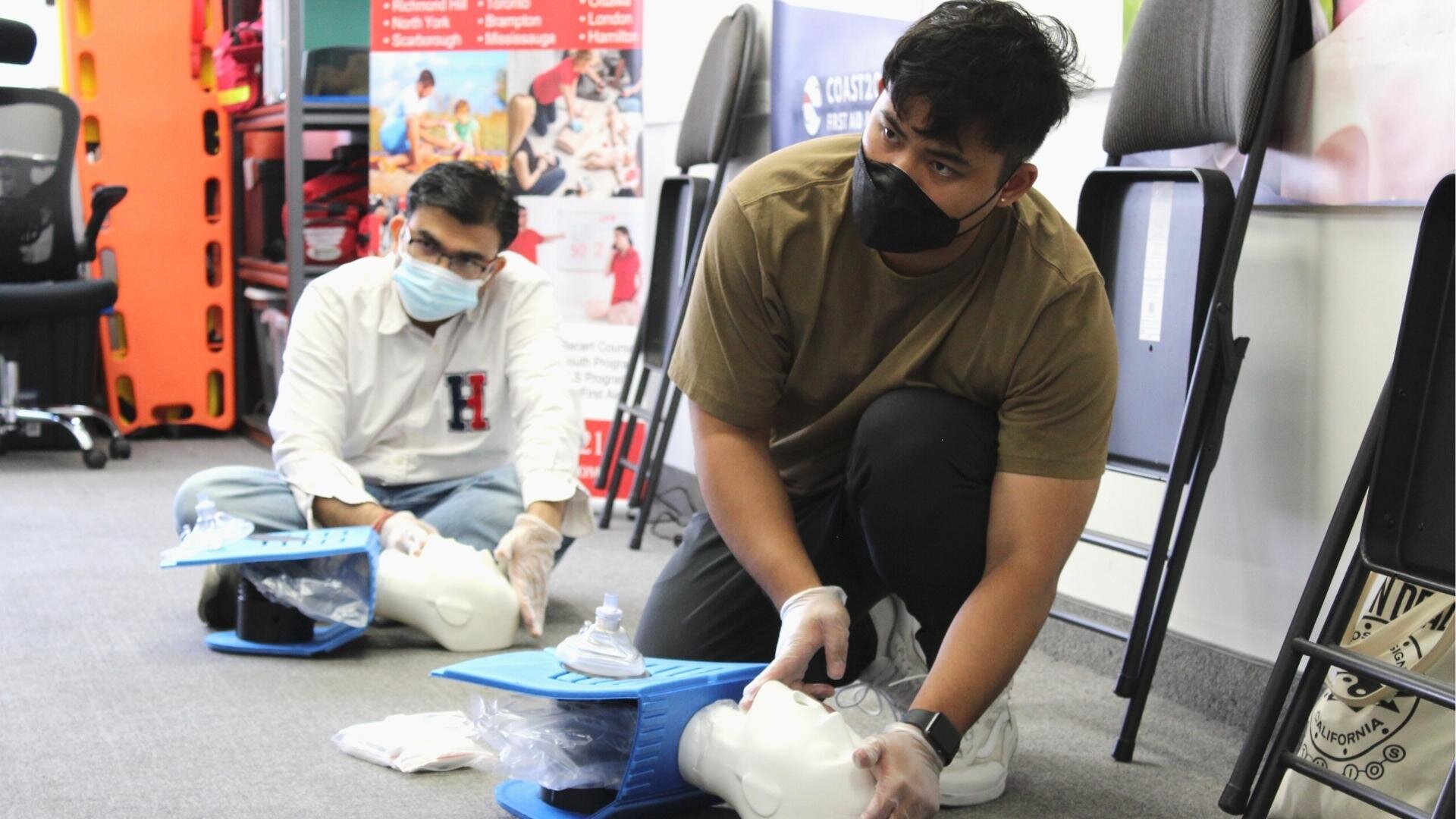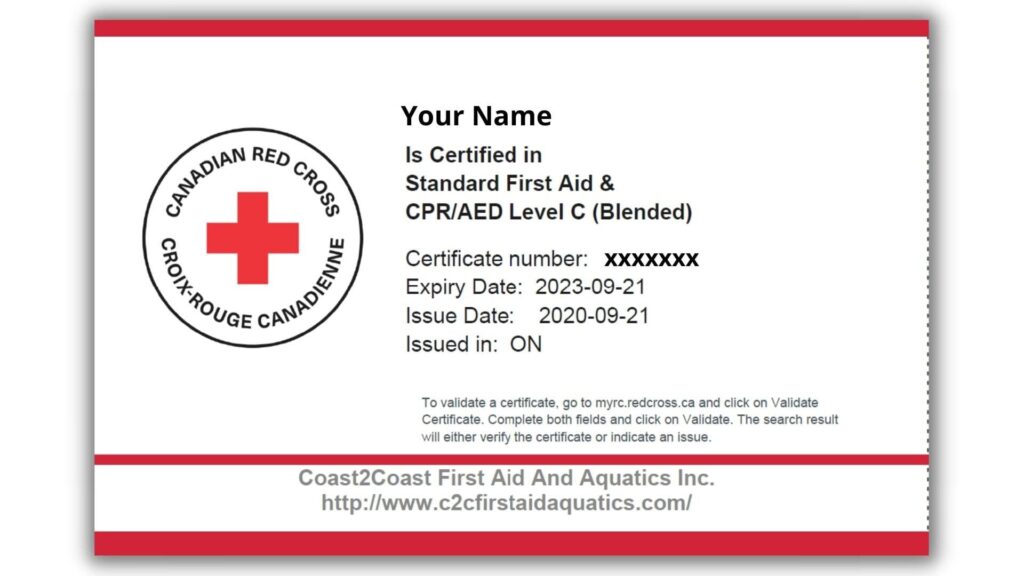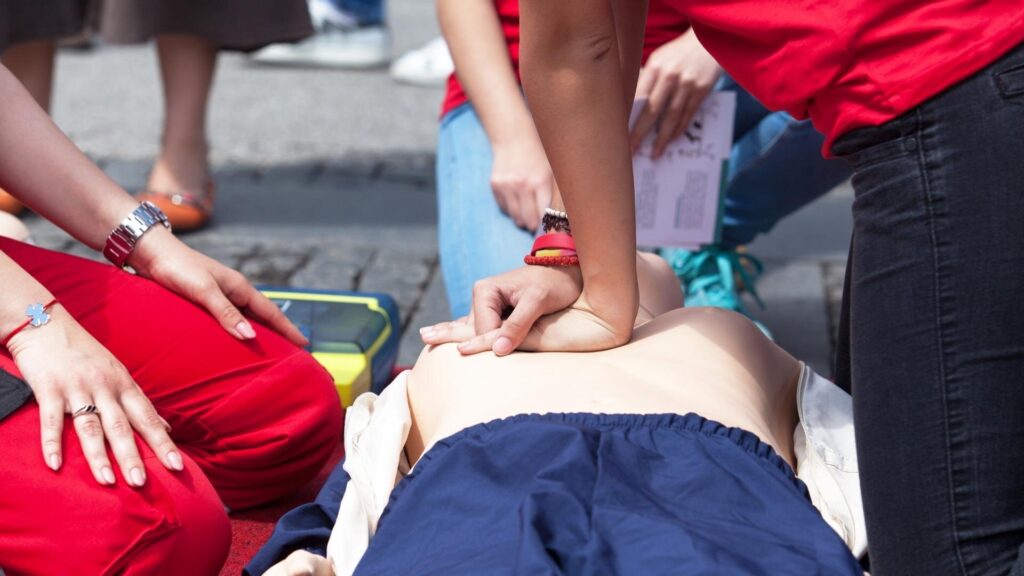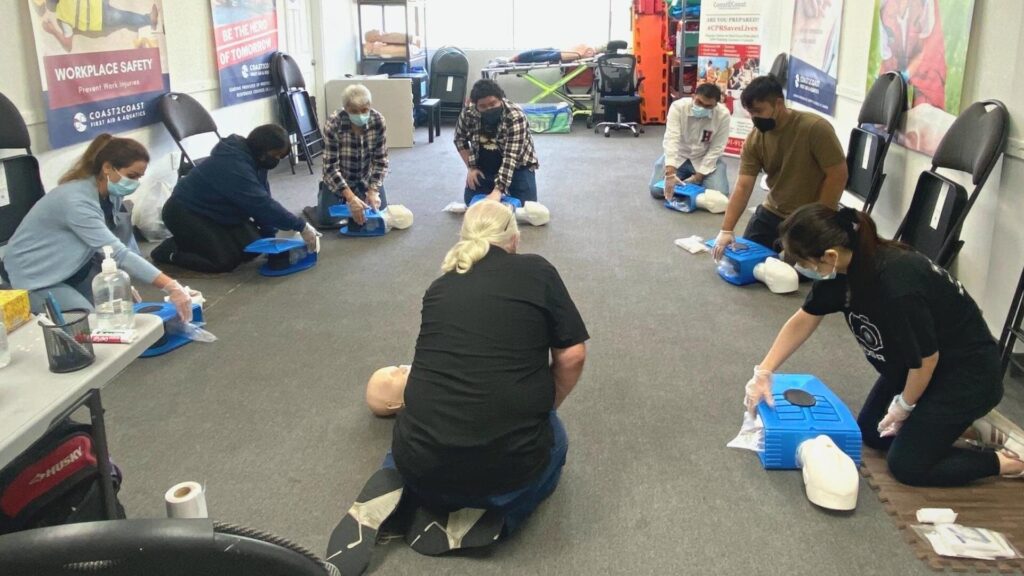During the early phase of drowning, the person’s airway closes to prevent more water from entering the lungs. Involuntarily, the victim cannot breathe, leading to unconsciousness.
Continue readingWhat is CPR for a Health Care Provider?
Healthcare professionals play a vital role in their teams as they work in fast-paced environments. They should, as a result, be skilled in performing basic life support. CPR skills are essential in the everyday lives of healthcare workers because their profession focuses on saving lives. The potential for patients going into cardiac arrest is something they need to be aware of at all times and provide help if necessary. So, what is CPR for a healthcare provider?
Continue readingWhat to Wear for First Aid Training?
First Aid training prepares you to help others in several situations, including accidents and medical emergencies. In addition, the theoretical knowledge and practical skills learned during a First Aid course can impact someone’s survival rate.
Continue readingWhat is Standard First Aid Training?
Given that injuries and illnesses can happen at any time, it’s important to be prepared. With some basic first aid knowledge, you can prevent a minor accident from becoming more serious. A medical emergency is a frightening event, but if you are trained as a first aider, you could save someone’s life.
Continue readingDo Paramedics Need EMR Training?
Paramedics are specialized healthcare professionals trained to respond to emergency calls and provide medical help in emergency care to people outside of a hospital. They form part of Emergency Response Services (ERS), working primarily in ambulances.
Other tasks carried out by paramedics include providing medical care outside the parameters of an emergency call, including:
- Supervising patient transfers between medical facilities
- Working in community settings, for private companies on construction sites, or at sporting events
- Paramedics can also play an important role as educators, administration, or management officials
What is EMR Training?
Emergency Medical Responder (EMR) training is the maximum First Aid & CPR/AED training level. During the eight-day course, students get intensive training from Canadian Red Cross Instructors, ensuring they have no gaps in their theoretical or practical first aid skills; then, they will sit for an EMR exam to assess the knowledge gained. In addition, the participants learn how to assess and save lives as they practice their various life-saving skills in several recreated scenarios.
As an EMR, your training and skills surpass those of a First Aid professional. You will learn to provide essential life support treatments: oxygen and medication management, bleeding control, wound care, splinting, pain relief, CPR, etc. However, one of the most critical EMR skills is learning to make the correct assessments of sick or injured patients and to follow these with informed decisions that determine the best care and transportation to a hospital.
The dynamic learning techniques used during the training include video, skills demonstrations, practice sessions, media presentations, and discussions – all based on real-life situations you may face during your work.
Are you interested in taking an EMR course?
Complete the Professional Responder course with us to expand your career prospects in several fields. Call our toll-free number to know more.
Difference between First Responders & Emergency Medical Responders
First Responders take a 40-hour course where they learn comprehensive life-saving skills like CPR, bleeding control, and care for several acute and chronic conditions. In addition, the course trains professionals in several services to carry out First Aid until Emergency Medical Responders arrive on the scene. Their training includes crisis intervention, lifting and extracting patients, and handling multiple-casualty incidents.
Professions requiring First Responder training include police officers, rescue teams, fire service personnel, lifeguards, ski patrols, sports-medicine professionals, and workplace response teams.
EMR training differs because participants can work as paramedics. Their training requires 80 hours and includes transportation and pharmacology.
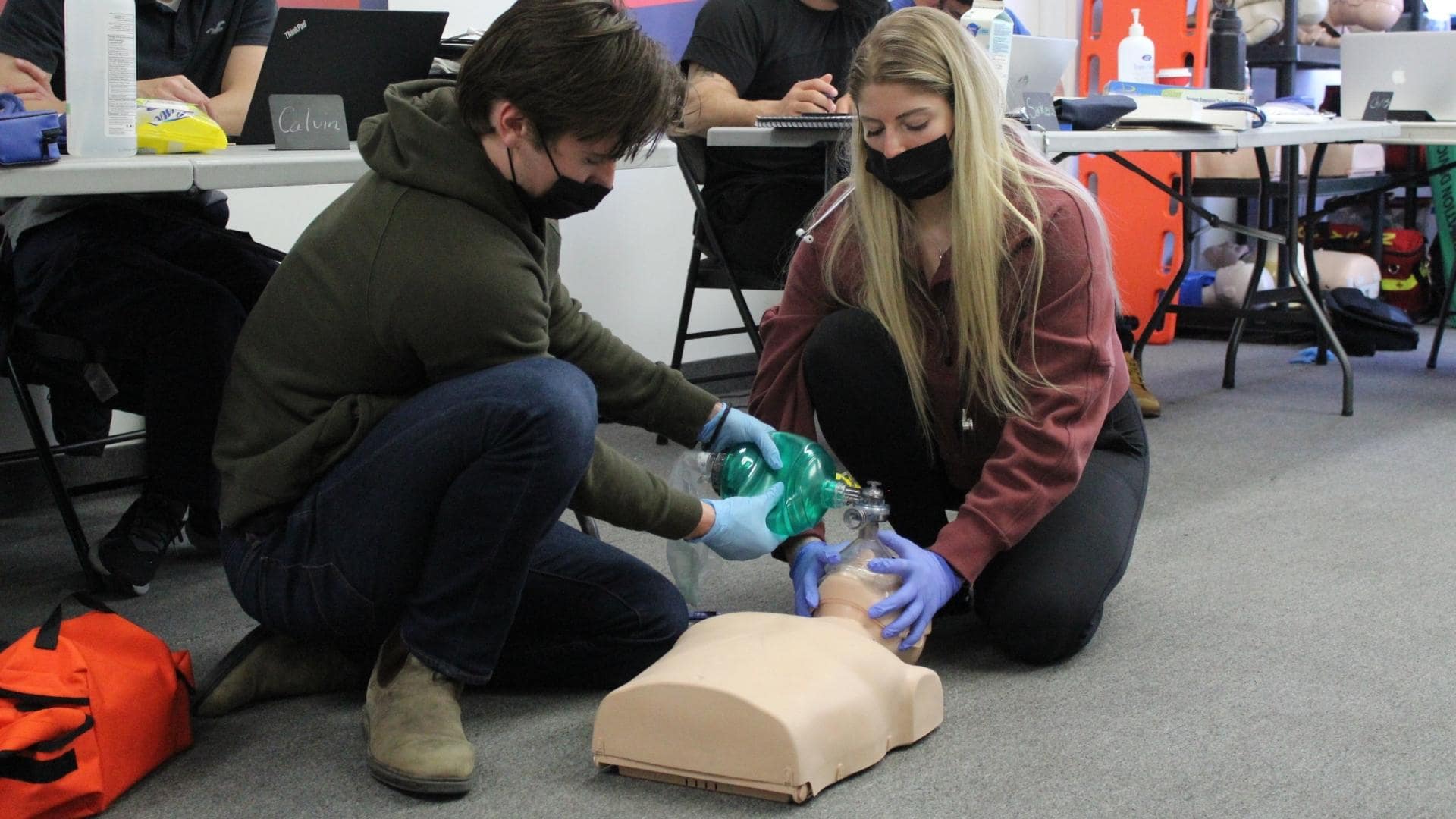
What Paramedics Do?
Ever wondered what it’s like to be a paramedic? Let’s peel back the curtain on this rollercoaster of sirens, split-second decisions, and the occasional battle with tangled stethoscopes. In the following video we explore the highs, the heart-pounding moments, and yes, even the comical mishaps that come with the territory. Get ready for a glimpse into a day in the life that’s both adrenaline-pumping and full of unexpected laughs!
What is the Importance of EMR Certification
Once completing the course, the participants can demonstrate their knowledge and skills by providing appropriate patient assessments, interventions, and ongoing care in any medical or environmental emergency. In addition, holders of EMR certificates have the training to oversee the transportation of patients to healthcare facilities.
Of course, the course content does vary according to jurisdictional requirements, but it follows the National Occupational Competency Profiles (NOCP) defined by the Paramedic Association of Canada.
EMR training provides all professionals in emergency medical care with the knowledge to make initial assessments, provide safe and careful medical care, and oversee the transportation of a patient to an appropriate healthcare facility for further treatment and care.
What Career Opportunities Does EMR Certification Provide
EMR training and certification allow you to start working as a hero of your community or privately in several exciting positions.
One of the most obvious is to start working with Ontario Emergency Health Services as an EMR. This career opportunity can open the door to continue advancing your training in this field. As a licensed medical professional, your training gives you several skills and a level of competency to start a career path with further training opportunities and career growth.
Furthermore, EMR certification also opens doors to several other career choices, including as a firefighter, with the ski patrol or working as an Occupational First Aid attendant in the industrial workforce.
If you prefer to work for a private ambulance company, you could consider applying to work with a patient transfer company in the province, transferring non-critical patients between facilities. Here you will be responsible for providing emergency care if complications occur during the patient transfer.
Finally, EMR training allows you to find work providing event or sports medicine, in the police force, working in a private security company, lifeguarding, coast guard, and even outdoor education.

Find EMR Training Near Me
EMR training covers a wide variety of skills paramedics and other first responders can use during patient care. Our training through the Canadian Red Cross follows jurisdictional requirements and follows the National Occupational Competency Profiles (as defined by the Paramedic Association of Canada). Paramedics do not necessarily need Emergency Medical Responder certification, however, we highly recommend aspiring or existing paramedics to complete the training to learn variations in techniques and methodologies to keep pace with the rapid advancements in the industry.
EMR training is an intense First Aid CPR/AED course that opens the doors to several exciting career paths. Coast2Coast provides EMR training with highly experienced Canadian Red Cross instructors across several areas in Greater Toronto, Eastern Ontario, and Western Ontario, making finding a class that suits your location more easily accessible. Once you have your EMR certification, you can look forward to an exciting world of work opportunities in several fields.
Register for Emergency Medical Responders Training
How Much is First Aid and CPR Training?
Many providers in Ontario offer government-licensed and valid certification for First Aid and CPR/AED training. However, you may ask: how much is first aid training, who needs it, and how long does the course take?
Continue readingWho Needs First Aid Training?
First Aid training is not mandatory unless required by your school or employer. However, when faced with an emergency, the First Aid training can help you make a difference by helping someone in need at home, in the workplace or your community. The faster you react in an emergency, the more the person’s chances of survival increase.
Irrespective of the question, “Who needs First Aid Training?”. Being First Aid trained has become a necessity since unforeseen circumstances can knock on anyone’s door. In this blog, we will discuss what makes First Aid training important.
What Does the First Aid Training Entail?
Emergency and Standard First Aid CPR/AED are the two levels of certification available in Canada. Depending on your personal needs and career, you choose one of the two.
Both levels include CPR, learning to respond to an emergency, the EMS system, wound care, and dealing with airway, breathing, and circulation emergencies. Furthermore, participants learn the three C’s procedures – Check, Call, Care.
Participants in the Standard First Aid Course have several additional topics to cover. These include:
- Response to cardiac and respiratory arrest
- Head, neck, and spinal injuries
- Injuries to bone, muscle, and joints
- Poisons
- Sudden environmental or medical emergencies
Learn about First Aid Training you might need
Get first aid trained and acquire skills to assist someone with your life-saving skills as you complete the course with us. Call our toll-free number to know more.
What Types of Professions Need First Aid Training
Professions like administrative staff, teachers, daycare workers, light construction, support workers, and healthcare aides mostly need Emergency First Aid certification, mostly with Level C CPR (for children and infants), unless their workplace specifies differently. Some industries require the more intense Standard First Aid Training and Level C CPR. These include rural workers, construction workers, law enforcement, camp counselors, etc.First Aid Trained Employees at the Workplace
In Ontario, WSIB Regulation 1101 sets the workplace requirements for First Aid certificate requirements. Usually, one person carrying a certificate from a WSIB-approved organization (including the Canadian Red Cross) must be present per shift. The type of First Aid training required will depend on the industry and the number of people present for each shift. Therefore, in a workplace with five or fewer people per shift, at least one requires a valid Emergency First Aid & CPR/AED Certificate. For those workplaces with six or more people working during a shift, at least one needs a valid certification for Standard First Aid & CPR/AED.
What is the Duration of First Aid Training?
The duration of First Aid training depends on the levels of First Aid and CPR you require and whether you prefer to do the all-in-class or online blended course. All-in-Class Emergency First Aid takes 6.5 hours when you choose Level A CPR and 8 hours with Level C. Online Blended Emergency First Aid requires three to four hours of online training and 3.5 hours if doing the Level A CPR class. If you choose Level C CPR, the online course requires the same time, but the in-class training is 5.5 hours. All-in-class Standard First Aid takes 13 hours of teaching time for Level A CPR and 16 hours for Level C. These courses run over two days. Online Blended Standard First Aid for Level A and C CPR requires 7-8 hours online. The in-class section takes 5.5 hours for those taking Level A CPR and 8 hours for those taking Level C CPR.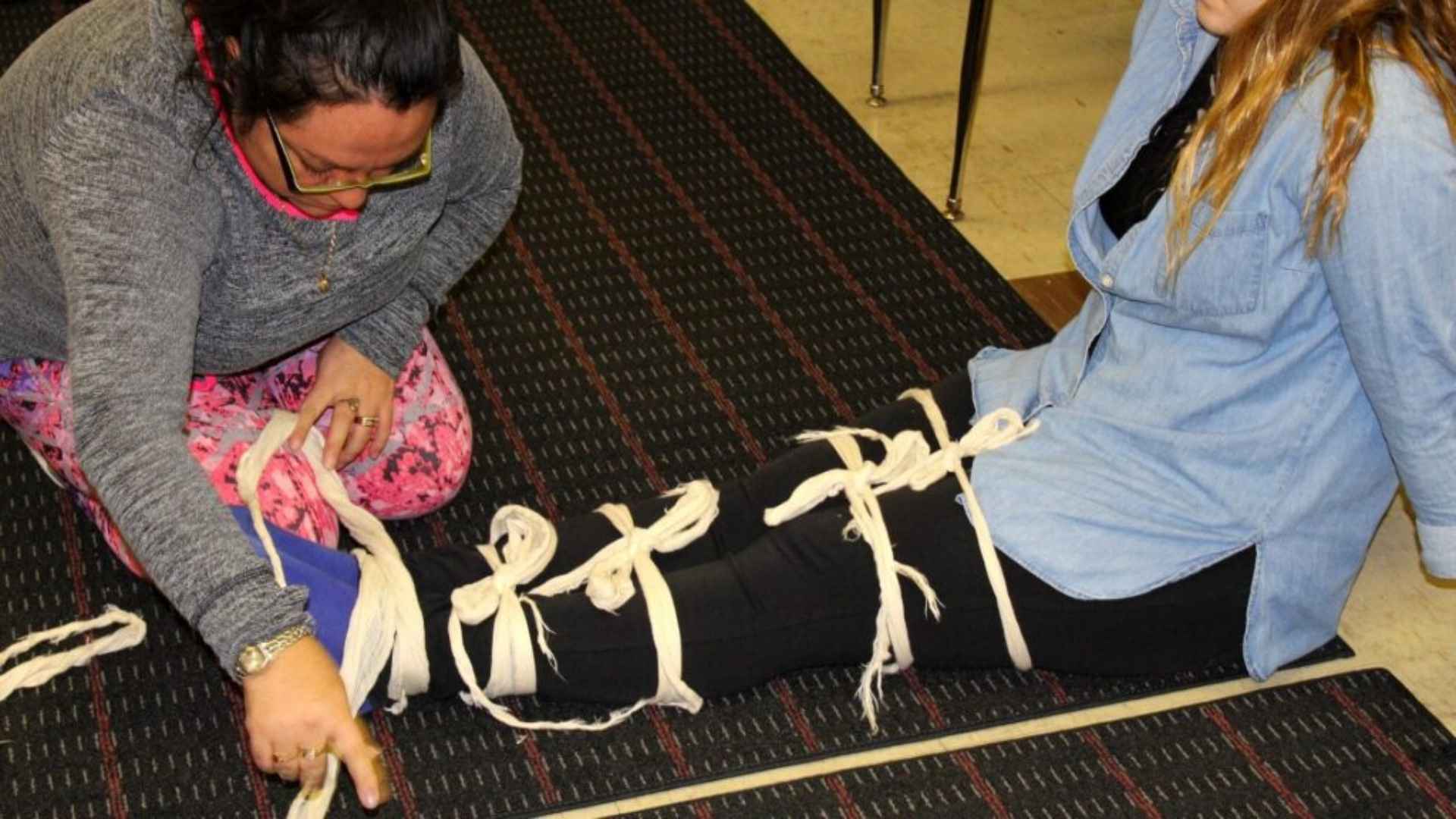
Validity of Certification
The Emergency and Standard First Aid Certificates and their accompanying CPR training are valid for three years from the date of issue. It’s good not to let these expire before retraining for recertification.Can I Take First Aid Training Online?
Yes, you can take first aid training online, but you will only learn the theoretical part of the course. If you want First Aid certification for your workplace, you must also complete the in-class training to practice using your skills effectively to help in an emergency.
Working on your own schedule is one of the significant benefits of doing part of your first aid course online. Your First Aid training can help save lives, so find a program with flexible hours to complete the practical side of your course.
Find First Aid Training Near You
In Ontario, Coast2Coast provides Canadian Red Cross WSIB-approved First Aid & CPR training programs that can meet the needs of anyone. Whether you prefer to start with the online training before following with the all-in-class section or want to do the whole course all-in-class, Coast2Coast provides several slots to make it easier for you.
The training is available at several locations in the Greater Toronto Area, Eastern and Western Ontario. Private clients can also take Child Care First Aid and request group training on-site at their preferred location.
Whether you need the training for your workplace or to become a responsible citizen, register today and get your desired level of training with Coast2Coast’s highly-skilled instructors.
Register for First Aid & CPR Training
Breast Cancer Awareness
It’s already October! Did you know that October is Breast Cancer Awareness month? This month is dedicated to fighting back against breast cancer, one of the leading cancer causes of death for women in Canada.
With your help, researchers can continue to search for a cure or ways to prevent breast cancer in the future. Consider donating and participating in a Breast Cancer Awareness run in your city (more information is listed at the end of this blog)!
What is Breast Cancer?
Like all other cancers, breast cancer starts with one or more cells that change within the body. In this case, it forms in the breast. There are multiple types of breast cancer, including invasive ductal carcinoma, invasive lobular carcinoma, Paget’s disease and more.
This disease primarily is caused by a genetic abnormality. However, only 5-10% of cancers are caused by a gene mutation passed down through your mother or father. Instead, 85-90% of breast cancers are caused by abnormalities in genes that occur as a result of aging and the “wear and tear” in the lifestyle.
Donate to the Canadian Cancer Society to support breast cancer research in Canada.
Who Breast Cancer Affects
Breast cancer is the second leading cancer-related death for women and is typically found in women over 50. It is possible to be diagnosed earlier in life, though. Many risk factors may cause you or a loved one to be diagnosed with this challenging disease.
Many factors have to do with genetics. Women with mutations to the BRCA1 or BRCA2 genes have a higher risk of breast and ovarian cancer. These genes help fight breast cancer. In addition to these genes, those with a mother, sister or daughter diagnosed with breast or ovarian cancer have an increased risk. Their risk may also increase if they have multiple family members who have breast or ovarian cancer on either side of the family. And if you have been diagnosed with breast cancer, you are more likely than others to get it again.
Reproductive health plays a role here as well. The longer you are exposed to hormones, the more likely you are to get breast cancer. If you began your period before age 12 and did not begin menopause until 55, you are at higher risk.
Dense breasts can pose a higher risk for breast cancer, too. Breast density is the comparison between fibrous and glandular tissue versus fatty tissue. Density does not stay the same throughout your life. You are more likely to have dense breasts if you are younger, are pregnant/breastfeeding, take hormone replacements or have lower body weight. You can learn more about your breast density by doing a mammogram.

Symptoms of Breast Cancer
Not everyone experiences the same symptoms, but this list is an excellent guide to follow if you have any concerns. Keep in mind some people may not show any signs or symptoms. Some symptoms may not even be related to breast cancer. If you notice any signs, you should visit your doctor as soon as possible. This list is in no particular order:
- Pain in the breast
- Lump in the breast/underarm
- Flaky or red skin around the nipple area or breast
- Discharge from nipple besides breast milk (includes blood)
- Dimpling of the skin on the breast
- A change in size or shape of the breast
If you are concerned about lumps in the breast, please remember that two common reasons women get breast lumps are fibrocystic breast conditions or cysts.
How Can Breast Cancer Affect the Body?
Breast cancer can metastasize (spread) to other body parts, potentially resulting in tumors. With early diagnosis, you can prevent many effects of breast cancer.
Most effects come from the treatment you receive to remove breast cancer. Some typical effects during treatment include:
- Tiredness
- Changes in hair & skin
- Swelling
- Bone & Joint Pain
- Scarring
- Low sex drive and loss of ability to get pregnant
How to Prevent Breast Cancer
We discussed different risk factors that may cause you to be diagnosed with breast cancer. Let’s discuss the risk factors you can change to help prevent it:
- Exercise regularly
- Maintain a normal weight
- Caution with hormone replacement
- Minimize alcohol consumption
- Avoid smoking or being around hazardous chemicals
In addition to these risk factors, completing a breast self-exam regularly is also recommended. Stay familiar with your breasts that way, when you complete a self-exam, you will notice any changes such as pain, lumps, changes in size, etc. Make a self-examination part of your routine whenever you get your period.
There are various screening tests you may do as well. Doctors can perform mammograms, breast magnetic resonance imaging (MRI), or clinical breast exams.
It’s important to keep up with your health. See your doctor regularly and bring up any concerns regarding your breasts.
Let’s Raise Awareness of Breast Cancer
At Coast2Coast, we take health very seriously. This is why we’re going pink in support of Breast Cancer Awareness month! We have updated our logo and will donate to increase research against this horrible disease.
Although we could not organize an official team for CIBC’s Breast Cancer Awareness run this year, we have already begun the planning process for next year. Please be on the lookout for more information regarding our fundraising.
We encourage you to donate and participate in a run near you!
Why Every Parent Needs First Aid Skills
If you are a parent, it’s important to be prepared for accidents your children may have. Learn the essential first aid skills to keep your children safe!
How Much Does CPR Training Cost?
If you live in Ontario, there are several compelling reasons why you should take a CPR training course. The first possibility is whether it is a requirement for their employment or education. However, everyone should know how to perform CPR because the understanding and abilities acquired may help save a life in an emergency in the future. The question that follows is, “How much does CPR training cost?”
Continue readingHow Often Do You Need To Do First Aid Training?
Did you know that First Aid & CPR certificates expire? It’s true! How often do you need to do First Aid training, though? If you complete your certification with the Canadian Red Cross, certificates are only valid for three years. With this in mind, it’s important to complete a Recertification course in order to keep your certification valid.
Once you become First Aid & CPR certified, your knowledge and skills allow you to help others during a medical emergency. How cool is that? Incidents happen on a daily basis and your training could help you save a life. Since this certification is only valid for three years, retraining will help you refresh your skills and learn new advancements in First Aid and CPR.
What Level of First Aid & CPR/AED Training Do You Need?
Whether your decision to get First Aid training and certification is for your employment needs or out of personal interest, once you complete the training, you have the qualifications to help others. Before deciding to take a First Aid course, it is good to know that there are two training levels.
According to WSIB rules, your employer may have to ensure you have completed one of the two levels of training. For example, in companies with up to 5 employees on a shift, one person needs Emergency First Aid & CPR/AED training. Then again, in companies with more than 5 employees per shift, one person must have the more advanced Standard First Aid & CPR/AED training.
If you complete the training because you want to help others in your home and community, the level depends entirely on you. It’s worth keeping in mind that both training levels will teach you how to help others in breathing emergencies. You also learn how to assist people with circulatory issues, help save internal and external bleeding, choking, and CPR.
With Standard First Aid, expect to learn about assisting people with spine, bone, and muscle injuries, poisons, and several medical and environmental emergencies.
How Long is the Certificate Valid
At Coast2Coast, both levels of First Aid & CPR/AED certificates, provided by the Canadian Red Cross, are valid for three years. Even though this feels like a short time, it is critical to refresh the techniques you have learned to ensure you remember how to use them in an emergency. Furthermore, researchers continue to discover new ways of assisting people in medical emergencies, and you learn these during retraining.
Is your First Aid & CPR Certificate Expired?
Is your First Aid & CPR certificate expired? Unsure about the next steps? Join us in this informative video where we discuss the importance of keeping your certifications current and the straightforward process of recertifying with Coast2Coast. Whether you’re a healthcare professional, educator, or concerned individual, staying updated with life-saving skills is essential. Watch now to learn how Coast2Coast makes recertification convenient and accessible, ensuring you’re prepared to respond effectively in emergencies.
Learn What Level of First Aid & CPR/AED Training you need
Learn and refresh your skills to assist someone with your life-saving skills as you complete the course with us. Call our toll-free number to know more.
What are the Requirements to Enroll for a Recertification?
The most basic requirements for enrolling for recertification are:
- You must hold a Standard First Aid certificate from a full training course (not a previous recertification course)
- The certificate must still be valid (not expired)
- You must attend the full course
- You must score at least 75% in the test to ensure recertification with a 3-year validity
Therefore, enroll in a class before your certificate expires to ensure you qualify for the Standard First Aid & CPR/AED recertification.
You can only recertify a Standard First Aid Certificate once. When that expires after three years, you need to retake the full training course. Therefore, you alternate between the full training and recertification courses.
Holders of Emergency First Aid certificates cannot get recertification in Ontario. Therefore, you will need to retake the complete training.
What’s the Duration and Pricing for a Recertification Course?
Recertification helps to refresh your memory and skills, and most of the course focuses on hands-on skills required during an emergency. These include CPR, placing the patient in the recovery position, bandaging, etc.
The all-in-class Standard First Aid & Level C recertification training takes 8 hours. You require 100% attendance and a minimum score of 75% on the test consisting of multiple choice questions on your knowledge.
You can also take the Blended Standard First Aid Recertification Course. The duration includes 4 hours online and 4 hours in class. This format is only available for private training.
Once you complete the retraining, you immediately get a temporary certificate with a 30-day validity. Then, within 5 days, you get a PDF copy of your 3- years certificate via email.
You can also recertify CPR Level C certification with a 4-hour in-class training course or opt for the blended course of 2 hours online and 2.5 hours in-class training. You can recertify CPR/AED Level C more than once.
These training courses require full training because they don’t have recertification:
- CPR-A
- Emergency First Aid
Recertification Prices:
- In-Class Standard First Aid & CPR Level C Recertification: $89.99+HST
- Blended Standard First Aid & CPR Level C Recertification: $89.99+HST
- In-Class CPR Level C Recertification: $59.99+HST
- Blended CPR Level C Recertification: $59.99+HST
*These are prices as of September 21, 2022. Prices are subject to change in effect at the time of delivery.
Find Training Near You
Recertification is not simply a renewal; it’s also a method to continue learning and improving your professional expertise every day, ensuring you are always prepared to put your first aid training into practice when required. All First Aid & CPR training is valid for 3 years in Canada, and you can only recertify your Standard First Aid certification after alternating with a full training course.
Coast2Coast provides WSIB-approved First Aid training courses from Canadian Red Cross instructors to residents in several districts of Ontario. Find your preferred training center in Greater Toronto, Eastern Ontario or Western Ontario, and register for the correct training or recertification for your work or personal requirement.
